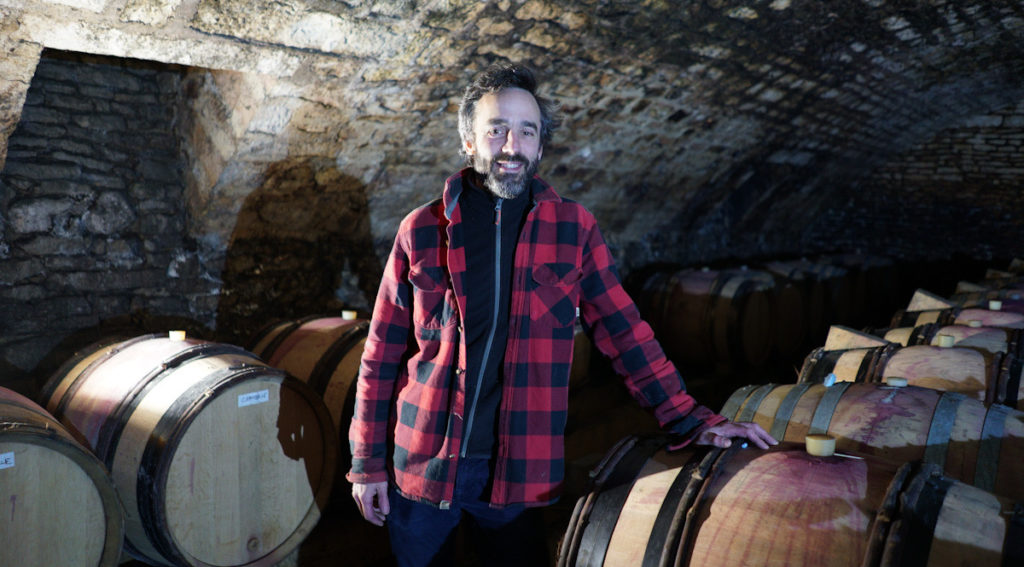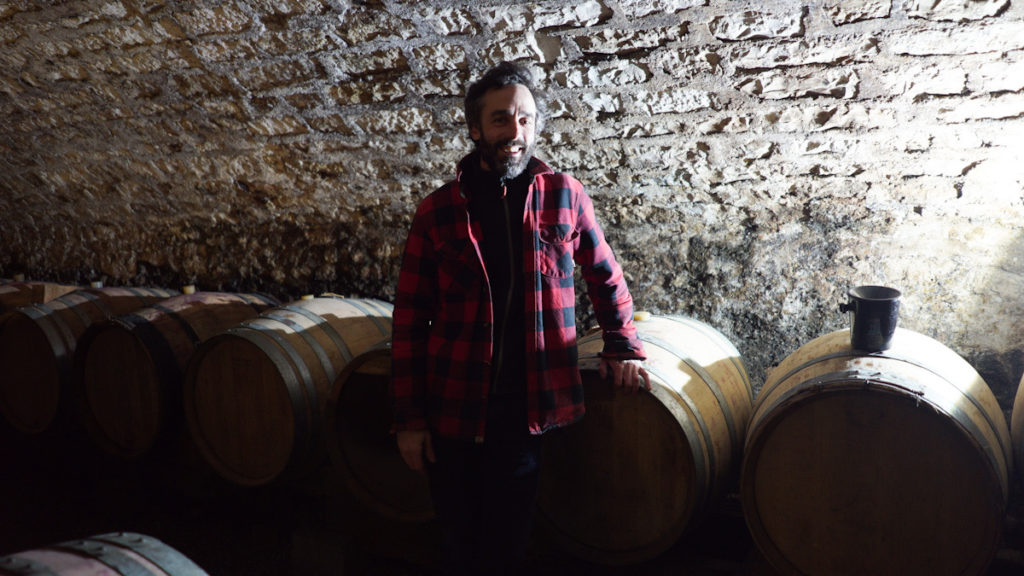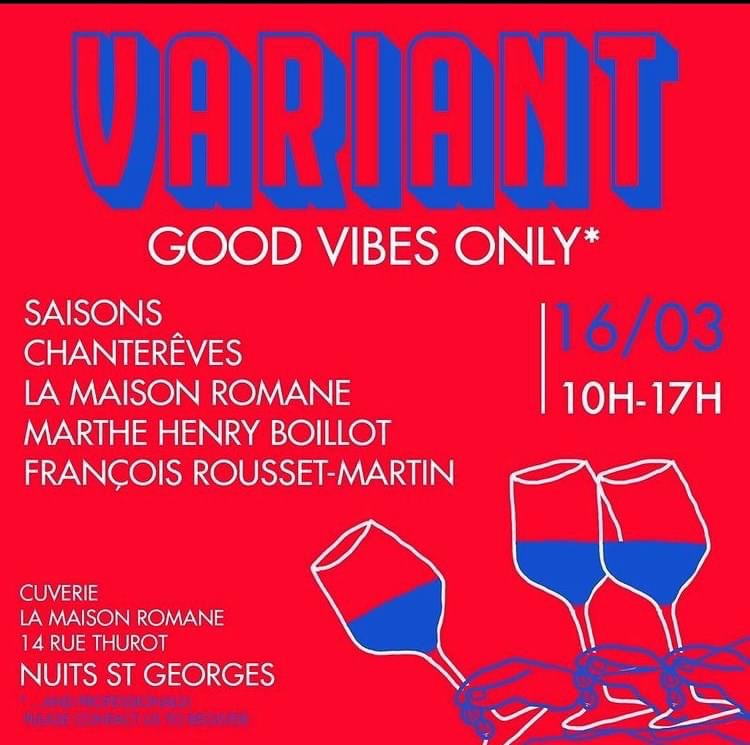Oronce de Beler is, regardless of how you look at it, a true Burgundy personality. This agro-alimentary gadfly produces beer, cider, eggs, pork, and wine, based at his new (old) estate in the centre of Nuits-Saint-Georges.
Some of the products are organic, others not, but all of them have an organic feeling – a hippie glow, if you like. Good vibes, and a feeling in which you want to join.

The bottom line is: These are products with an edge and with – sometimes – a rather expressive stance. This means some will be to your liking; others, not so much.
I have followed Oronce for many years. Not all the wines he has made were what one would call textbook examples; some were borderline on the “exciting” side of the limits. They were wines with a Bohemian character and gave a feeling of laissez-faire, which gave a certain decadence to the products, leading one to enjoy and forgive rather than rate and measure.
This is where The Winehog risks sticking his snout into controversy, by discussing things that are not necessarily important to the customers of La Maison Romane.
The §§ ghost
Having tasted many of Oronce de Beler’s wines over the years, I know that some of them are on the high side volatility-wise.
This is a question of degree, and by far, most of the wines are just on what I call the “spicy” side. I often consider this as charming, rather than an issue, the difference being, again, a question of degree. Some people are, however, sensitive towards all prominent elements in a glass of wine, and should therefore stay with the usual well-analysed grape juice. Others, willing to walk on the wilder side, should just dive in; it sort of fits with Maison Romane’s concept and vibe.
What are the Maison Romane wines?
These are what I would call hippie, slightly rebellious wines with an intellectual glow that says: We care, but don’t always show it!
They are not very precise wines, being low-sulphured, often with a healthy dose of whole-cluster grapes.
It’s always hard to compare. and most likely I will end up offending one or more. But after all, it’s just wine, so here we go!
De Beler’s wines are, style-wise, from the same school as Cossard and Pacalet, back when they were introduced 20 years ago. Yet they seem much less controlled and sometimes quite a bit more on the wild side. There is apparently room for minor errors and imperfections.
Warning: The Winehog is not very impressed with the whites from Maison Romane, although they are improving.
In addition to visiting the estate, I also attended the event “Variant: Good Vibes Only” to get some more impressions of the La Maison Romane wines.
Vins de soif!
To the more serious part of the tasting, as a wine critic
Perhaps it is important to highlight this statement from the Maison Romane website:
“I’m not trying to make the best wines in the world.
What interests me is that my wines provoke emotions.”Oronce de Beler
This statement perhaps explains a lot…
Whites
The Hautes Cotes de Nuits Blanc 2020 is a blend of chardonnay and pinot blanc. It’s rich and yeasty, with quite a touch of initial oxidation. There is a fine, mineral note and a rich, fruity sensation, with notes of pear. Ripe, yet cool.
(Drink from 2021) – Above Average – Tasted 03/03/2021
The Côte de Nuits 2020 Villages blanc comes from the Corgoloin vineyard Les Monts de Boncourt; just on the border with Comblanchien. This is a bigger terroir, and the wine is more mineral with a nice, organic style. It’s a bit yeasty, but with nice acidity and a delicate, intense style. Definitely on the organic side.
(Drink from 2021) – Good – Tasted 03/03/2021

Reds
The first of the reds is the Hautes Cotes de Nuits 2020, coming from the Arcenant area. A vin de soif, this has a hint of cinnamon, and is quite intense in the cool style of the 2020s. It is fresh and delightful, with notes of boysenberries and forest raspberries. Drinking very well indeed.
(Drink from 2021) – Good – Tasted 03/03/2021
A step up quality-wise, yet a step down in geography, the Côte de Nuits Villages 2020 comes from the Comblanchien terroir Les Loges. This is made from 80- to 90-year-old vines, yielding a generous, aromatic wine. Rich, supple, and with a silky feel, it is long and intense with a decadent drinking profile. This wine is for sharing (get a magnum).
(Drink from 2025) – Very Good – (88p) – Tasted 03/03/2021 – ![]()
Next up, the Marsannay Longeroies 2020, a wine on the more generous side from the northern part of the appellation. Very vivid, with delicate, sweetish fruit, this is still cool and elegant. Delightful drinking, with a lovely fresh stance.
(Drink from 2026) – Very Good – (87-88p) – Tasted 03/03/2021
Fixin Les Clos 2020 is from the nothern side of the village, but is not showing well currently. It is reduced, but with a fine mineral and acidic backbone. Somewhat stemmy, with a cinnamon note quite dominant bouquet-wise. A bit on the harder side currently, but it has the same inherent qualities. A bit more elevage should soften this.
(Drink from 2026) – Very Good – (87p) – Tasted 03/03/2021
You need to login as a Premium subscriber to read the rest of this article. If you are not a Premium Subscriber, use the subscribe function and sign-up.


 - A true vin d’émotion – a Burgundy of passion
- A true vin d’émotion – a Burgundy of passion - A truly hedonistic wine – lively and enjoyable
- A truly hedonistic wine – lively and enjoyable - A vivacious wine for pure indulgance
- A vivacious wine for pure indulgance - A potential vin d´émotion - frais et léger
- A potential vin d´émotion - frais et léger
Leave a Reply
You must be logged in to post a comment.